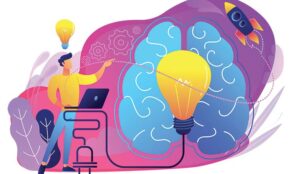If you’ve ever started a new job, you’ve likely gone through some form of a training program. These programs vary in their format, but all generally have the same goals: to teach new employees everything they need to know to be successful in their job.
This process can take weeks if not several months, as these new employees have heaps of information to learn.
And since every day a new employee is in training is a day they’re not productively working, there’s a lot of pressure to keep these programs as short as possible. This means learning a lot of information in a short amount of time.
So what’s the best way for these new employees to learn all this new information? That’s what we’ll be exploring in this blog post. Let’s start with two different types of learning: topic-based learning and scenario-based learning.
Topic-based learning: this type of learning is most commonly used to train new hires, and it is the learning style still used in most schools today. It is exactly what it sounds like. A new employee will go through a series of different topics either reading about them, hearing about them in presentations, or learning about them in videos.
This type of learning could be delivered through microlearning, eLearning, classroom training, etc.
Scenario-based learning takes a different approach, focusing on exposing employees very early on in their training to the various scenarios they’ll encounter in their role. It’s much less common in organizations, but if applied correctly can be much more effective than traditional topic-based learning.
Let’s look a little more closely at how they’re different.
Memorization
With topic-based learning, employees have to memorize a lot of new information that’s packed tightly into the training program. It’s impossible for them to retain everything they’ve learned, especially when employees are in training for 40+ hours per week.
In contrast, scenario-based learning relies on learning by doing, and puts a strong emphasis on performing real-life work scenarios instead of memorizing information. And without the need to memorize, learners can focus on their performance and doing everything they can to help customers.
Gap From Training to Working
Information presented in topic-based learning looks very different from what an employee will encounter in real-life work scenarios. This can cause confusion and uncertainty and may create a lot of guesswork for employees.
If executed properly, scenario-based learning will walk a new employee through the exact scenarios they’ll encounter when working, closing the gap between training and working.
Engagement
40 hours of classroom training and long eLearning programs can make it challenging for learners to focus. Topic-based learning relies heavily on these methods, making it easy for learners to become disengaged. Scenario-based learning has employees perform the tasks they’ll have to complete when on the job, keeping them engaged and motivated.
Overwhelmed Learners
Learning a lot of new information in a short amount of time can be very stressful and overwhelming for learners. Topic-based learning essentially asks employees to drink from a fire hose, learning years of knowledge in just a few weeks or months.
Scenario-based learning presents learners with bite-size pieces of information, guiding them through each scenario step-by-step in a way that’s simple and easy for anyone to follow and understand.
When information can easily carry over from training to real-life work scenarios, you can be confident that your agents have the tools and knowledge they need to succeed.
Author: Robyn Coppell
Published On: 3rd Mar 2020 - Last modified: 25th Mar 2022
Read more about - Guest Blogs, ProcedureFlow















